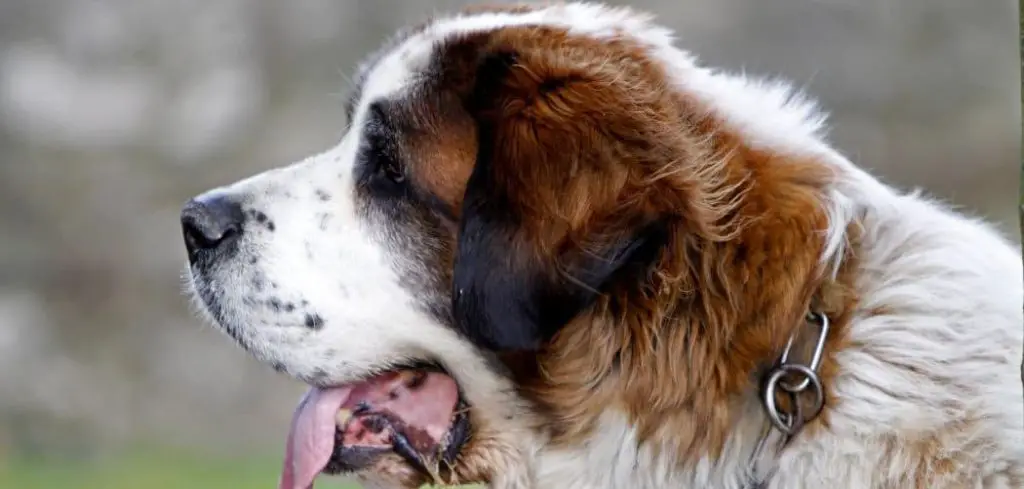Dogs panting while showing signs of nervousness can be concerning. Panting is a natural way for dogs to cool down, but when paired with anxiety or stress, it may indicate an underlying behavioral or medical issue.
We outline the common reasons for panting and nervousness in dogs, what you can do at home, and when to seek veterinary help.
Table of Contents
Dog Panting and Nervous — Why It Happens
When a dog is panting and acting nervous, it’s often linked to stress, fear, or anxiety. Dogs may pant heavily during thunderstorms, fireworks, vet visits, or other situations that trigger nervousness. Panting helps them cope with stress, but it can also indicate discomfort or underlying health problems if it happens without an obvious trigger.

Dog Panting and Nervous: Common Causes
Anxiety and Stress
Anxiety is one of the most common reasons for a dog to pant when nervous. Situations like loud noises, unfamiliar environments, or separation from owners can trigger a stress response.
Panting occurs as part of the dog’s “fight or flight” reaction, helping regulate body temperature and coping with stress.
Signs include pacing, trembling, whining, hiding, or excessive licking.
Chronic anxiety can affect a dog’s overall health and quality of life, making it important to identify triggers and provide a safe environment.
Read more: Dog Panting and Moaning (What it might mean)
Fear of New Situations
Exposure to new people, animals, or locations can make a dog nervous and pant excessively. Fear-induced panting is a natural response to uncertainty and the perception of potential threats.
You may notice cowering, tail tucked, or attempts to escape. Gradual desensitization and positive reinforcement can help dogs adjust to new experiences over time.
Pain or Discomfort
Panting when nervous may sometimes signal pain or discomfort. Dogs often mask pain, and anxiety or nervousness can exacerbate it, causing visible panting.
Look for limping, reluctance to move, whining, or sensitivity to touch. Veterinary assessment ensures that underlying injuries or medical conditions are treated appropriately.
Illness or Medical Conditions
Certain medical issues, such as heart problems, respiratory disorders, or fever, can cause panting and nervous behavior. Illness may make dogs more restless or uneasy, amplifying stress-related panting.
Other signs include lethargy, coughing, vomiting, or pale gums. Early veterinary evaluation is crucial to identify and manage these potentially serious conditions.
Social Anxiety or Separation Anxiety
Some dogs experience social anxiety or separation anxiety, leading to nervous panting. Being away from family members or around unfamiliar dogs can create stress.
Symptoms include barking, destructive behavior, drooling, pacing, and excessive panting. Behavior modification, environmental enrichment, and sometimes veterinary-prescribed medication can help manage anxiety.
Noise Sensitivity
Loud or sudden noises, such as thunderstorms, fireworks, or construction, can make dogs nervous and increase panting. Noise-sensitive dogs may also tremble, hide, or seek comfort from their owners.
Creating a safe, quiet space and using calming aids like white noise, pheromone diffusers, or anxiety wraps can reduce stress. Persistent noise anxiety may require professional behavioral intervention.
Past Trauma or Negative Experiences
Dogs with a history of trauma or negative experiences may be prone to nervous panting.
Past abuse, neglect, or frightening events can leave lasting stress responses that trigger panting in stressful situations.
Signs include avoidance, hyper-vigilance, or aggression. Patience, positive reinforcement, and working with a certified dog behaviorist can help build confidence and reduce anxiety over time.
What to Do If Your Dog Is Panting and Nervous
Keep your dog calm and provide a safe, quiet environment. Avoid forcing them into stressful situations, and give them time to relax.
Offer comfort through gentle petting, a favorite toy, or treats, but do not over-solicit, as this can reinforce anxiety in some cases.
Engage in regular exercise and mental stimulation to help reduce baseline stress levels. Structured walks, puzzle toys, and obedience training can provide both physical and mental outlets.
Monitor for additional signs of illness or pain, such as vomiting, coughing, or lethargy. If medical issues are suspected, consult a veterinarian for proper evaluation.
Consider professional guidance for chronic anxiety or phobias. Behaviorists can create customized desensitization and counter-conditioning plans to reduce nervous panting.
When to Call or Visit Your Vet
Seek veterinary attention if your dog’s nervous panting is accompanied by:
Persistent or worsening panting at rest
Vomiting, diarrhea, or loss of appetite
Trembling, weakness, or collapse
Signs of respiratory distress or labored breathing
Unexplained aggression or sudden behavioral changes
Veterinary assessment helps rule out medical causes and ensures appropriate treatment or behavioral intervention.
Read more: Dog Panting and Jerking (Here’s why)
Key Takeaway
Panting and nervousness in dogs can stem from anxiety, fear, pain, medical conditions, noise sensitivity, or past trauma.
While occasional nervous panting may be normal, persistent or severe cases warrant attention.
Providing a safe environment, monitoring behavior, and seeking veterinary or professional behavioral help are essential steps to ensure your dog’s comfort, safety, and long-term well-being.
